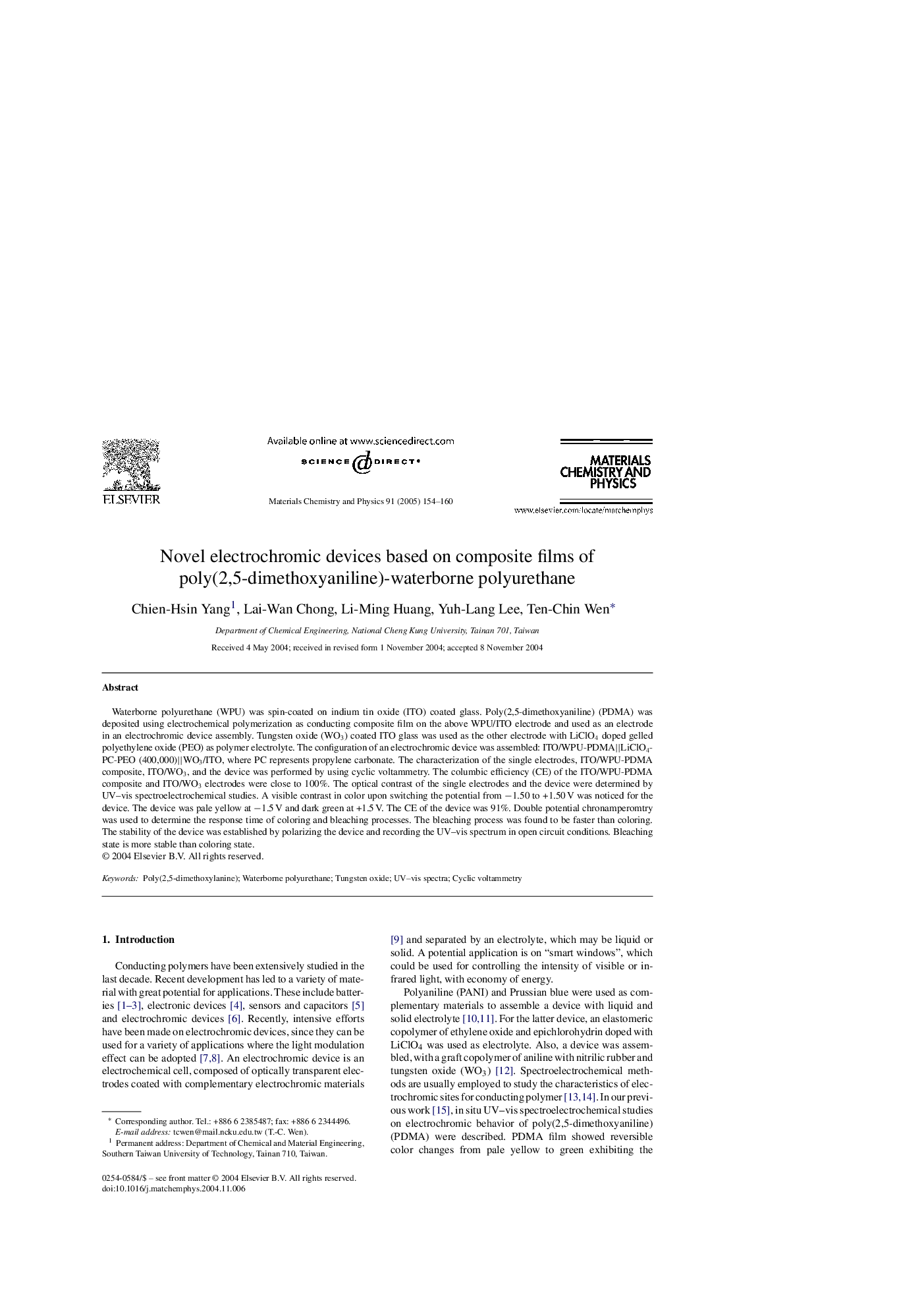| Article ID | Journal | Published Year | Pages | File Type |
|---|---|---|---|---|
| 10638479 | Materials Chemistry and Physics | 2005 | 7 Pages |
Abstract
Waterborne polyurethane (WPU) was spin-coated on indium tin oxide (ITO) coated glass. Poly(2,5-dimethoxyaniline) (PDMA) was deposited using electrochemical polymerization as conducting composite film on the above WPU/ITO electrode and used as an electrode in an electrochromic device assembly. Tungsten oxide (WO3) coated ITO glass was used as the other electrode with LiClO4 doped gelled polyethylene oxide (PEO) as polymer electrolyte. The configuration of an electrochromic device was assembled: ITO/WPU-PDMA||LiClO4-PC-PEO (400,000)||WO3/ITO, where PC represents propylene carbonate. The characterization of the single electrodes, ITO/WPU-PDMA composite, ITO/WO3, and the device was performed by using cyclic voltammetry. The columbic efficiency (CE) of the ITO/WPU-PDMA composite and ITO/WO3 electrodes were close to 100%. The optical contrast of the single electrodes and the device were determined by UV-vis spectroelectrochemical studies. A visible contrast in color upon switching the potential from â1.50 to +1.50Â V was noticed for the device. The device was pale yellow at â1.5Â V and dark green at +1.5Â V. The CE of the device was 91%. Double potential chronamperomtry was used to determine the response time of coloring and bleaching processes. The bleaching process was found to be faster than coloring. The stability of the device was established by polarizing the device and recording the UV-vis spectrum in open circuit conditions. Bleaching state is more stable than coloring state.
Related Topics
Physical Sciences and Engineering
Materials Science
Electronic, Optical and Magnetic Materials
Authors
Chien-Hsin Yang, Lai-Wan Chong, Li-Ming Huang, Yuh-Lang Lee, Ten-Chin Wen,
